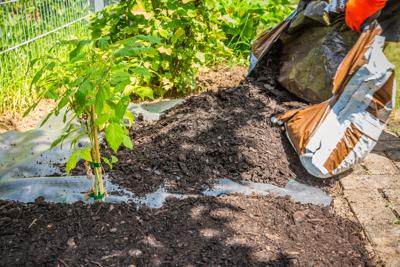So, you really don’t like weeds? You’re not alone. Unfortunately, the nightmare of weed season is just about to begin. Whether you're managing a tidy lawn or a blooming planting bed, understanding the differences in weed control strategies can save time, frustration and even a few dollars.
Let’s start with planting beds. Here, physical barriers are often the first line of defense. Mulch is your best friend.

Apply it two to four inches deep. If you’re using pine straw, you can go a little thicker because it’s lighter and airier. Not only does mulch help smother weeds by blocking sunlight, but it also retains moisture and moderates soil temperature.
It’s simply good garden hygiene. Some gardeners like to go a step further and use weed barrier fabric under their mulch. While synthetic barriers can suppress weeds for a while, they often outstay their welcome.
After a few seasons, plant roots grow into the fabric, preventing it from being lifted. Plus, it blocks the integration of beneficial organic matter into the soil. Worse still, weeds eventually germinate on top of the barrier, making it nearly useless.
I’ve found that biodegradable options, like thick newspaper layers, are a better choice. They decompose naturally in a year or two and don’t create long-term problems. One smart strategy is competitive planting.
When plants grow close together, they shade the soil and crowd out weeds by denying them the light they need to sprout. Over time, with dense plantings, you may even find you need less mulch. Chemical herbicides are another tool in the toolbox, both in planting beds and turf.
Pre-emergent herbicides are preventive measures that stop annual weeds from establishing. They don’t keep seeds from germinating, but they kill young seedlings before they get a foothold. Timing is everything.
Apply them before the weeds begin to germinate. To control summer annuals like crabgrass, you’ll want to apply a pre-emergent around Valentine’s Day. These treatments typically remain active for about six weeks, so a follow-up application in May might be necessary depending on the product and weather conditions.
While most pre-emergents are synthetic, there’s one organic option worth mentioning: corn gluten meal. It's not quite as effective as its synthetic counterparts, but it does double as a nitrogen fertilizer, so even partial weed control comes with a side of growth boost. In flower beds, Preen is one of the most popular pre-emergent herbicides.
Still, I try to avoid using them when I can. They do work, but they also come with side effects and contribute to chemical buildup in the environment. The fewer herbicides we use, the better.
Lawns present a different challenge. If your turf is healthy, dense and thick, it will naturally outcompete many weeds. I only recommend pre-emergent herbicides on lawns that are thin or recovering from damage, where exposed soil gives weeds an opening.
No matter how diligent you are, weeds will still find a way. That’s where post-emergent herbicides come in. These are applied directly to weeds after they’ve sprouted.
Non-selective post-emergents, like Roundup, kill almost anything they touch, so they’re best used in planting beds, not turf. Roundup is systemic, which means it gets absorbed and kills both above- and below-ground plant parts like rhizomes and tubers. There are organic post-emergents too, but they work differently.
These are typically contact herbicides, meaning they only affect the leaves they touch. They work fast by burning the foliage, but they don’t reach the roots, so they’re less effective against perennial weeds. Examples include herbicidal vinegar, essential oils and herbicidal soaps.
Selective herbicides offer a more tailored approach. These are designed to kill only certain types of weeds, either grassy or broadleaf, while leaving others intact. This makes them especially useful for turf, where you want to control broadleaf weeds without harming the grass.
In flower beds, however, selective herbicides are trickier to use, since most flowers and weeds are both broadleaf species. And finally, a word on the weeds you’re seeing now. Most are winter annuals nearing the end of their life cycle, sending out seeds for next fall.
In lawns, the best approach is to mow them down and skip the herbicide. They’re on their way out anyway, and mowing adds just enough stress to finish the job..
Technology

Gardening column: Weed management strategies

Unfortunately, the nightmare weed season is about to begin. Whether you're managing a tidy lawn or a blooming planting bed, understanding the differences in weed control strategies can save time, frustration and even a few dollars.















